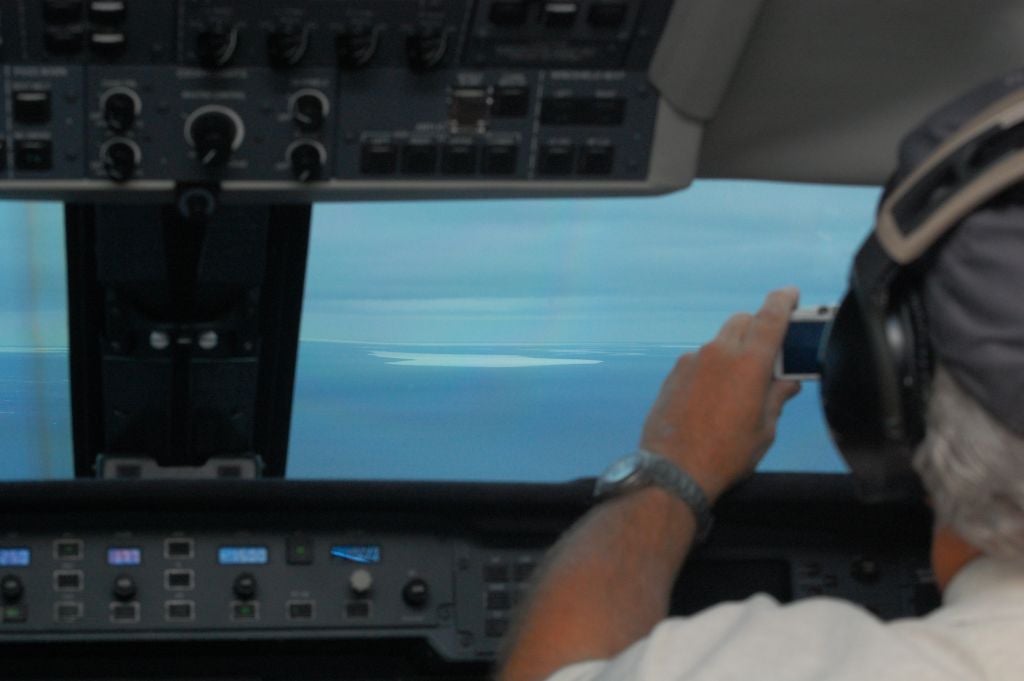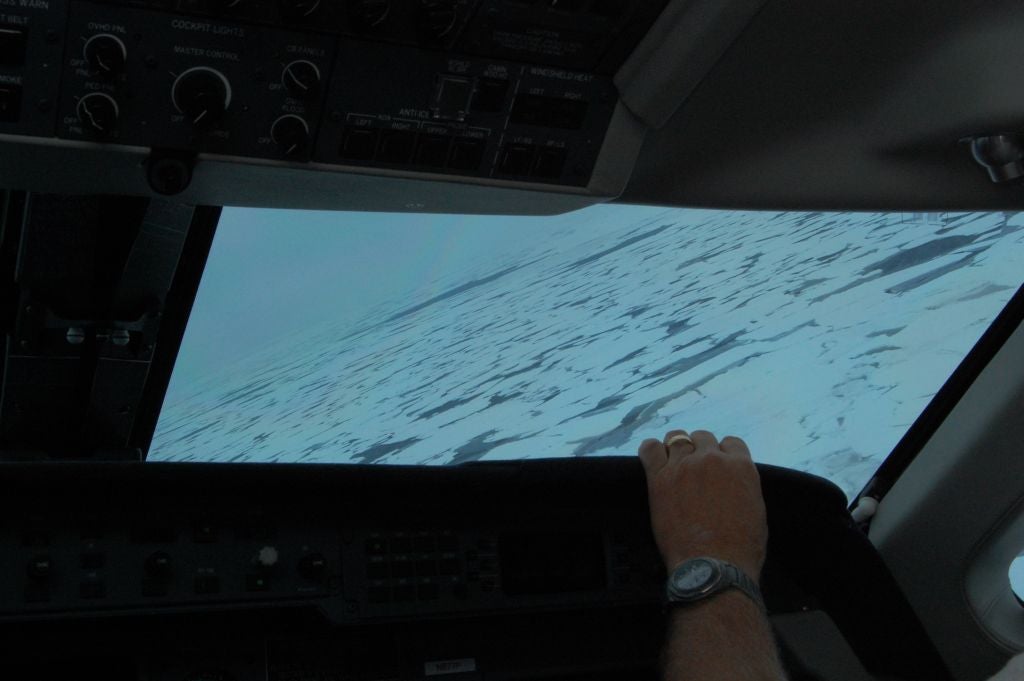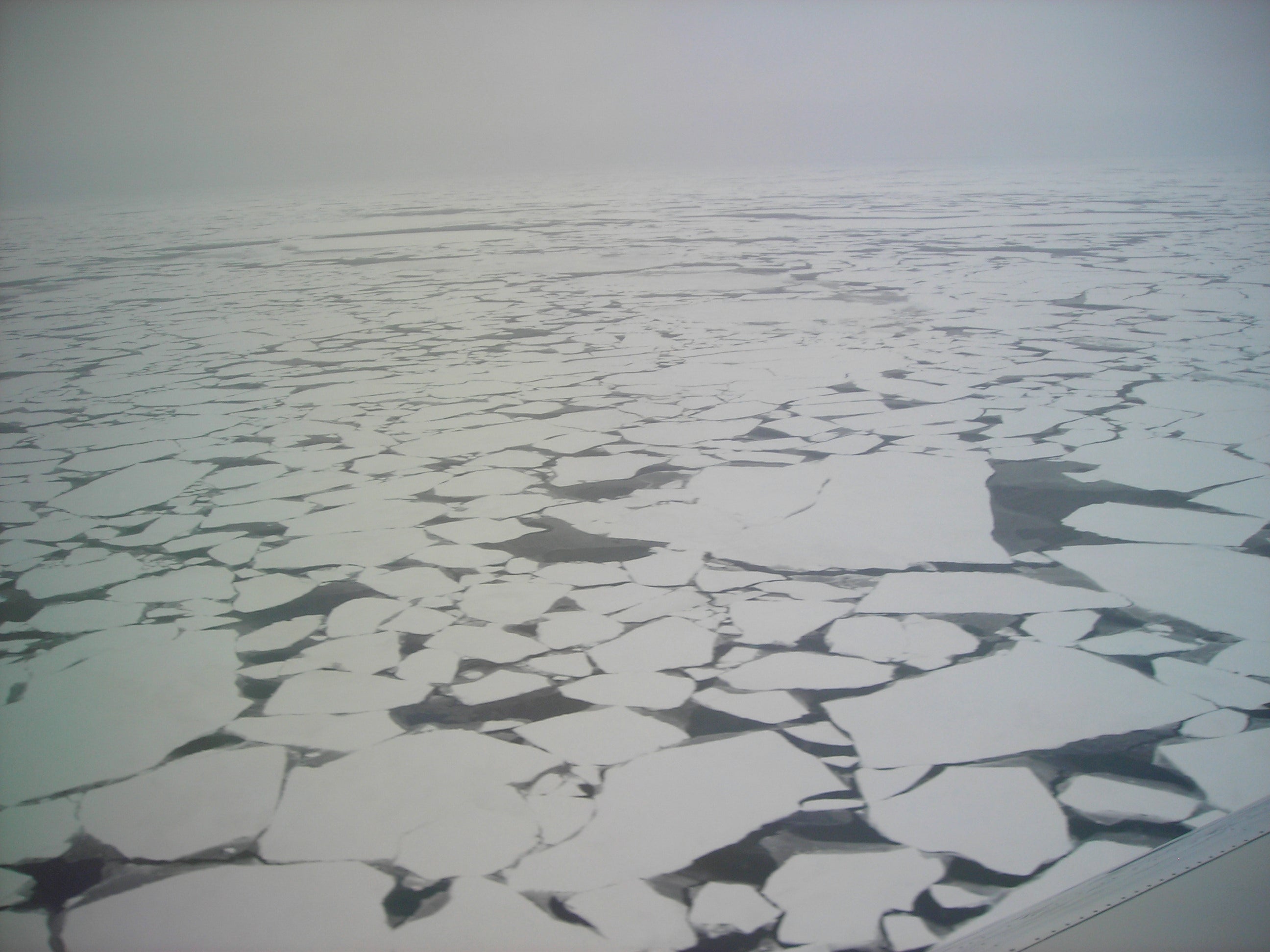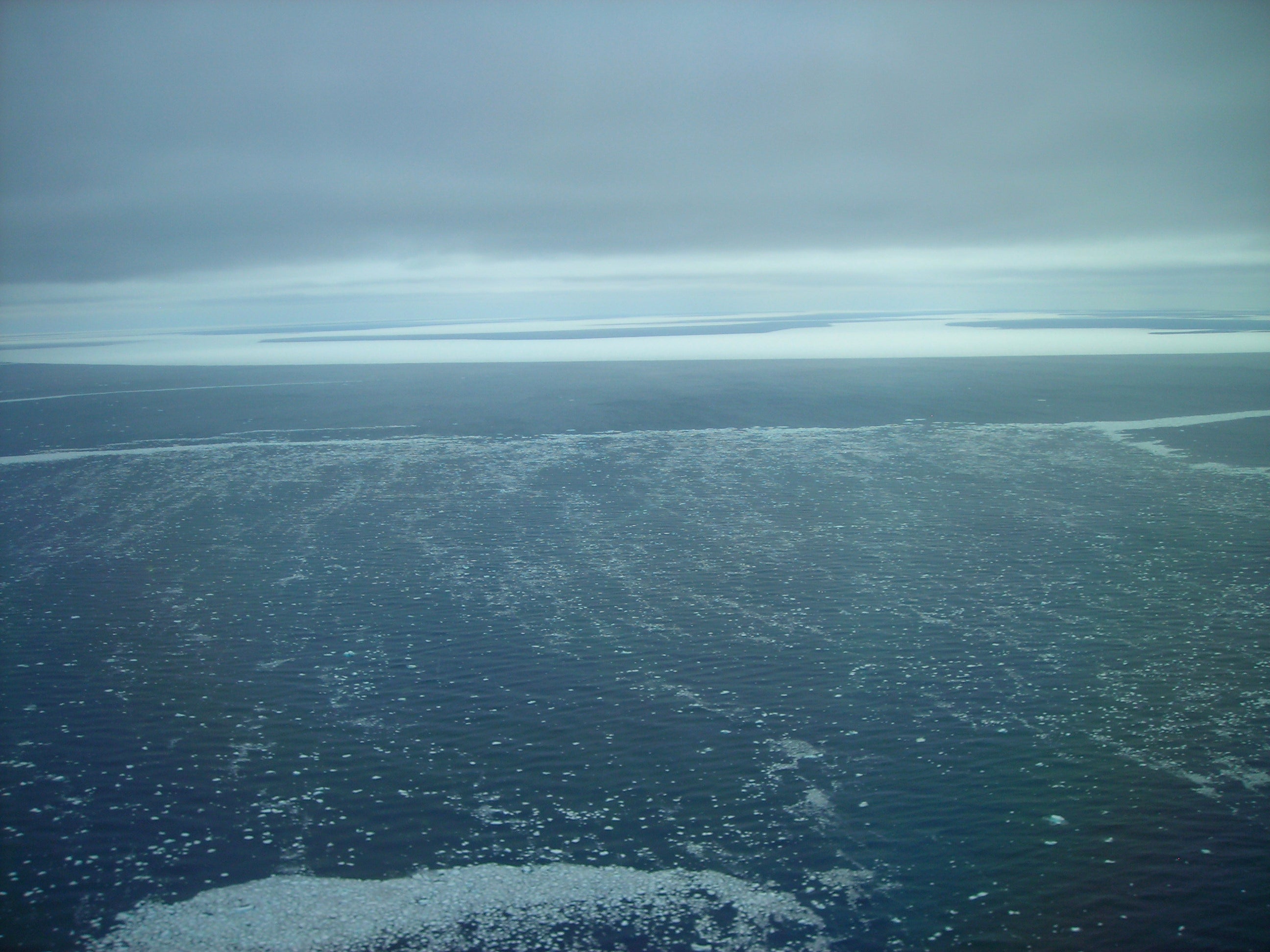November 12, 2009
The NSF/NCAR GV and the HIPPO team had yet another successful flight towards the South Pole.
The NSF/NCAR GV was routed to the East of their original flight plan, in order to avoid a weather system located directly South of New Zealand to prevent potential icing of instruments. This route allowed the GV to reach 66° South. The aircraft completed 6 dips along the way.
 Floating ice was first noticed at approximately 63° South, then again on dip number 5. The crew has decided to cut down on the altitude of the last ascent but perform one extra dip, number 6, in order to sample air in the boundary layer over the forming ice. This was the farthest point of the flight and the GV had to turn back at that time.
Floating ice was first noticed at approximately 63° South, then again on dip number 5. The crew has decided to cut down on the altitude of the last ascent but perform one extra dip, number 6, in order to sample air in the boundary layer over the forming ice. This was the farthest point of the flight and the GV had to turn back at that time.
The turn at 500 feet above sea level was performed flawlessly by the pilots and the GV flew above cracked ice fields, with all people onboard taking numerous pictures, collecting measurements in the boundary layer.
Interestingly, they saw two or three seals on the ice that stayed close to large cracks with open water. No penguins, maybe next time!
 After the final turn the GV began a gradual climb to 43,000 feet and returned to Christchurch three hours later. The overpass of the Lauder observatory was cancelled due to overcast conditions at Lauder, which made ground based observations impossible. The samples taken in flight over Lauder would have been used in conjunction with the ground observations giving them a "complete column" sample, so without the ground based observations the fly over samples would have been moot.
After the final turn the GV began a gradual climb to 43,000 feet and returned to Christchurch three hours later. The overpass of the Lauder observatory was cancelled due to overcast conditions at Lauder, which made ground based observations impossible. The samples taken in flight over Lauder would have been used in conjunction with the ground observations giving them a "complete column" sample, so without the ground based observations the fly over samples would have been moot.


Video: RF06 Forward Looking Camera